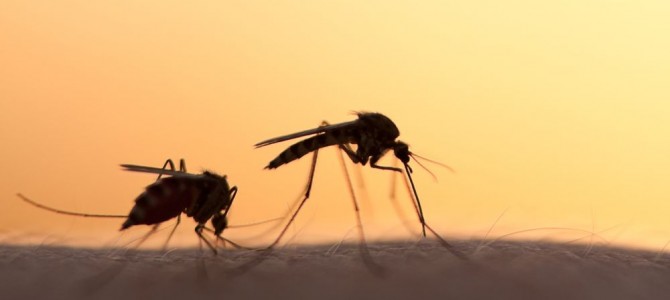Congress continues to spar over the White House’s $1.9 billion emergency funding request to fight Zika, the Senate recently approving $1.1 billion and the House $622 million with a veto threat against the latter.
The mosquito-borne virus, which causes terrible birth defects in babies born to infected mothers and paralytic disease in adults, is expected to reach some 50 U.S. cities as the weather gets warmer, extending throughout the South and up the East Coast. Five-hundred Americans have contracted the disease through visits to Latin America and the Caribbean. There is no vaccine or cure available.
It never needed to get to this point. Zika was actually identified decades ago in Africa, but until now wasn’t considered a threat to the Americas. That is because the mosquito that spreads the virus, Aedes aegypti, was practically eradicated in Latin America in the 1940s and ’50s.
DDT Almost Eliminated Zika’s Carrier Mosquitos
Eradicating Aedes was tough business until the mid-1940s when using DDT all but eliminated the mosquito and, with it, the many diseases in addition to Zika it can carry, most particularly yellow fever. It’s largely forgotten now, but in 1867 and 1888-89, yellow fever epidemics wiped out entire towns, killing hundreds and infected thousands more in Texas and Florida. Death carts appeared in the streets and yellow flags marked the homes of the diseased. Yellow fever was brought under control by 1905 but malaria continued to threaten the United States until post-war DDT spraying essentially eradicated it in this country.
The reprieve didn’t last long, however. Environmental campaigners in the 1960s and ’70s, such as Rachel Carson and Paul Ehrlich (among many others), pushed to halt the use of DDT, effectively shutting down mosquito control programs.
We know now that almost all the claims made against DDT were either false or hugely exaggerated and that it can be used safely to protect public health. None of that has stopped the activists. Buoyed by success against DDT, they continued to pressure governments and international organizations to end life-saving eradication campaigns. Even the World Health Assembly succumbed to this pressure, in 1997 passing a resolution calling for a reduction in the use of insecticides in disease control. Shamefully this occurred while Aedes aegypti-borne diseases were spreading to levels not seen since the 1940s.
Now We’re Back to Square One
Now Aedes aegypti is back with a vengeance. Pilot programs using genetically modified mosquitoes have shown some promise, but there is insufficient evidence to suggest this will work in settings like Brazil. Finding a Zika vaccine could take decades.
What we need now are more new insecticides. This isn’t a trivial undertaking because the regulatory barriers to bringing new insecticides to market are formidable, raising costs by $200 million or more. A new class of insecticide has not been introduced for widespread public health use in around 30 years. Existing ones were primarily developed for agriculture.
One promising candidate is the innovative insecticide class known as neonicotinoids, which were developed to be safer for humans and other mammals (they are used on dog and cat flea collars). Tests show they could play a useful role in public health, but activists who have gotten them banned in Europe are trying to do the same in the United States, claiming they’re bad for bees.
In fact, U.S. Department of Agriculture surveys of honeybee populations show they are rising, not falling as the activists claim, and the overwhelming scientific evidence shows neonics can be used without harm to pollinators. In any event, should neonics be used in public health, the doses would be so small as to pose no environmental threat.
The emergence of Zika should help to focus the mind on balancing risks. The judicious use of insecticides has a vital place in public health. It’s time for the environmental movement to halt its extremist attacks against insecticides and help in the search for new life-saving chemicals.









